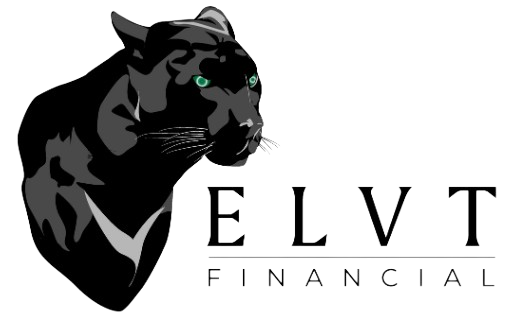Real estate has long been viewed as a solid path toward wealth building and long-term financial security. But whether you’re a new investor or seasoned property owner, one question remains at the center of every decision: what is a good return on investment in real estate?
The answer isn’t always straightforward. Return on investment (ROI) in real estate can vary based on property type, market conditions, financing strategy, and the investor’s long-term goals. Still, understanding how ROI is calculated, what benchmarks to consider, and how to improve your returns is crucial to successful real estate investing.
In this article, we’ll break down how to evaluate ROI, what qualifies as a “good” return, and how to ensure your real estate investments align with your broader financial strategy.

Defining Return on Investment (ROI)
ROI in real estate represents the percentage of profit made on a property relative to the total investment. It helps investors measure the effectiveness of their capital and compare one investment against another.
The basic ROI formula is:
ROI = (Net Profit / Total Investment) x 100
For example, if you buy a property for $250,000, spend $25,000 on renovations, and sell it for $325,000, your profit is $50,000. Your ROI would be:
ROI = ($50,000 / $275,000) x 100 = 18.18%
While this is a simplified model, it gives a clear view of how much return you’re making on each dollar invested.

What is Considered a Good ROI in Real Estate?
A “good” ROI depends on your investment goals, risk tolerance, and whether you’re pursuing long-term income or short-term gains. However, industry standards offer general benchmarks:
- 5% to 10%: Conservative but steady, often seen in low-risk markets or long-term rental properties.
- 10% to 15%: A solid return for many investors, balancing moderate risk with healthy cash flow.
- 15% or higher: Excellent, especially if achieved consistently or without over-leveraging.
At ELVT Financial, we help investors analyze their ROI across different properties and structure deals to meet or exceed their ideal return benchmarks based on personalized risk profiles and investment goals.
ROI vs. Cash-on-Cash Return
It’s important to distinguish ROI from cash-on-cash return, especially in leveraged deals. While ROI includes the total cost of acquisition, cash-on-cash return focuses only on the actual cash you invested.
For example, if you put down $50,000 on a property and earn $6,000 annually in net income, your cash-on-cash return is:
($6,000 / $50,000) x 100 = 12%
Cash-on-cash is often a more useful metric for evaluating the performance of financed properties and helps clarify how well your actual dollars are working for you.

Factors That Impact ROI in Real Estate
Several variables affect your ability to achieve a strong ROI. These include:
Location
Location is still king in real estate. High-demand areas typically command higher rent and resale values, though they may also require larger upfront investments.
Property Management
Managing the property efficiently reduces vacancies, improves tenant satisfaction, and keeps expenses in check.
Renovations and Upgrades
Value-added improvements can increase rental income and resale value, directly impacting ROI. However, over-improving can reduce profitability if the market won’t support the higher value.
Market Trends
Local supply and demand, interest rates, and economic conditions all influence property value and rental income potential.
Financing Strategy
The use of leverage can enhance ROI, but also adds risk. Structuring financing to reduce carrying costs while maintaining positive cash flow is essential.
Our financial team helps clients explore these variables, model different ROI scenarios, and align their investment strategy with their long-term financial plan.

ROI for Different Real Estate Investment Types
Different real estate strategies come with different ROI expectations.
Long-Term Rentals
These properties generate ongoing cash flow and potential appreciation. Investors often aim for 6% to 12% ROI depending on the location and property type.
Short-Term Rentals (Airbnb, vacation homes)
These offer higher revenue potential, but also come with increased management demands. A good ROI here might exceed 15%, but it depends heavily on occupancy rates and seasonal demand.
Fix and Flip Properties
Investors often seek 20% or more ROI on flips due to the short timeline and higher risk. However, construction delays, market shifts, and underestimating renovation costs can reduce returns quickly.
REITs and Passive Investments
Returns may be lower than active real estate investment, but they provide diversification and liquidity. ROI generally ranges from 5% to 10% depending on the REIT’s performance.

Improving Your ROI
To maximize your return, consider the following tactics:
- Buy below market value: This creates instant equity and higher margin for profit.
- Add value strategically: Focus on cost-effective renovations that yield the highest rent or resale price increases.
- Refinance wisely: Lowering your interest rate or restructuring debt can improve cash flow.
- Choose high-demand areas: Invest where tenant demand supports premium rents and low vacancy.
- Minimize expenses: Manage maintenance and operating costs tightly to improve your net income.
We assist clients in evaluating deals, conducting market research, and executing value-add strategies that align with their portfolio vision.
ROI and Long-Term Wealth Strategy
At ELVT Financial, we don’t just look at ROI in isolation. We assess how each investment supports your broader goals—whether that’s retirement planning, generational wealth transfer, or replacing active income with passive cash flow.
Our real estate financial strategy sessions help clients:
- Understand true ROI through a tax-adjusted lens
- Evaluate timing for refinancing or selling
- Identify underperforming assets
- Integrate real estate into diversified financial plans
By taking a holistic view, you’re not just chasing high ROI—you’re building a resilient, purpose-driven portfolio.

Conclusion
So, what is a good return on investment in real estate? It depends on your strategy, your market, and your financial goals. But whether you’re targeting a 10% yield on a long-term rental or a 25% flip profit, knowing your numbers and aligning them with a clear strategy is key.
Let ELVT Financial help you evaluate, structure, and optimize your real estate investments for maximum impact. Schedule your consultation today and let’s grow your portfolio with intention and clarity.



